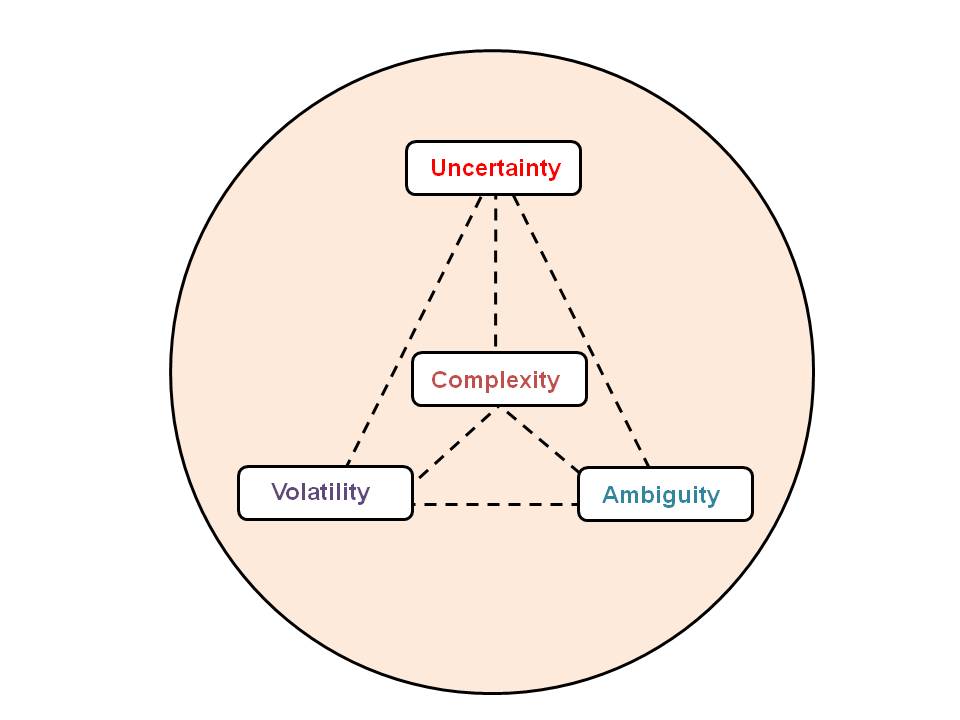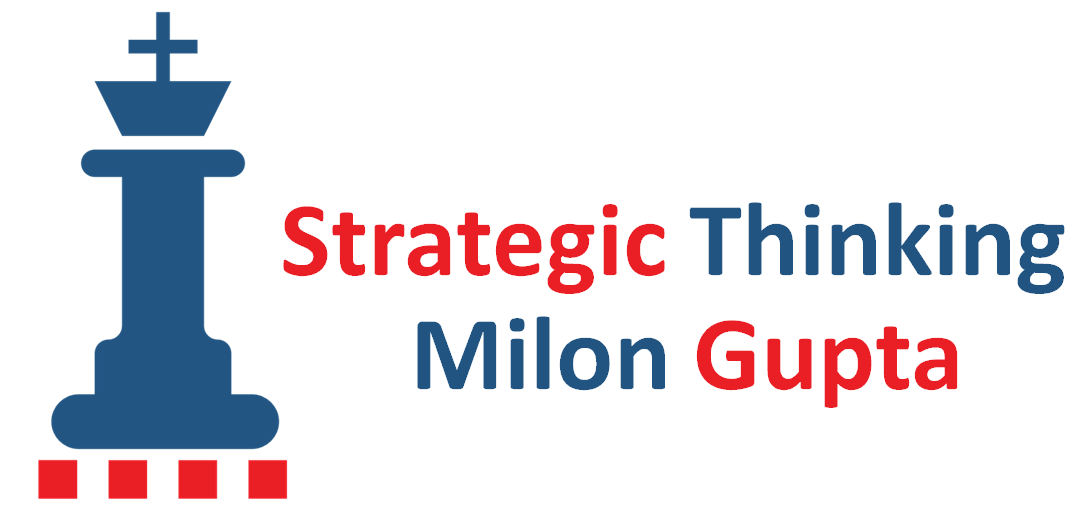
We live in uncertain times. Today, leadership may often feel like being the captain of a sailing ship in a heavy thunderstorm. While you are keeping the ship above water, you are struggling to keep your orientation, and you don’t know what will happen next.
Just think back 12 months. In August 2015, we didn’t know about a number of events and trends that are impacting business today. Think of Volkswagen’s Diesel manipulation scandal in the US, which was only revealed in September 2015. Or of the British vote to leave the EU, which most people didn’t expect to happen.
Did anyone last year expect the huge success of the location-based augmented-reality game Pokémon Go? There are many more events and trends that can be logically explained with hindsight, but which nobody exactly predicted a year ago. And many seemingly unrelated trends influence each other, which adds to the unpredictability.
Welcome to the VUCA world
Another term pundits are using to describe our current period of uncertainty is VUCA, which stands for volatility, uncertainty, complexity, and ambiguity. While many people just consider it to be a clever term for chaos, the four VUCA elements describe distinctly different aspects of what is happening.
 Let us take the example of Brexit. Before and after the vote, there was a high degree of uncertainty of what exact economic impacts Brexit would have in the longer term. Nevertheless, the Brexit vote led to highly volatile responses of financial markets. Leaving the EU itself is a highly complex process that offers various options for the future economic relationship between the UK and the EU-27.
Let us take the example of Brexit. Before and after the vote, there was a high degree of uncertainty of what exact economic impacts Brexit would have in the longer term. Nevertheless, the Brexit vote led to highly volatile responses of financial markets. Leaving the EU itself is a highly complex process that offers various options for the future economic relationship between the UK and the EU-27.
Looking at it from a British perspective the vote has an inherent ambiguity: leaving the EU means more independence from EU regulations on the one hand, while it could also mean less access to the EU’s common market, depending on the negotiations between the EU and the UK. By now it is not even clear, when the leave process is officially triggered by the UK government. The latest status is that it will not happen before 2017.
Brexit in itself is already very VUCA. However, there are also other, partly inter-related trends and events, like the refugee situation or the situation in Turkey, which add to the whole picture. Do these trends and events have an impact on your business? They could. However, it is rather uncertain, when and how.
How does this VUCA world fit into the neat world of traditional business planning? The simple and disillusioning answer is: it does not. Strategic planning as we knew it, is not sufficient for coping with the VUCA world. Companies that want to thrive in uncertain times need a fundamentally different approach to strategic leadership.
There are three principles that I consider essential for VUCA-proof strategic leadership:
1. Anticipate market and technology trends, opportunities and risks.
This principle may appear paradoxical. Isn’t the whole point about VUCA that you can hardly predict what will happen? And yet, you should anticipate trends? While it is true that you can hardly predict most events and trends with a high degree of certainty, you can nevertheless anticipate them.
 In the case of Brexit, you could have anticipated positive and negative effects on your business for both possible outcomes. In that way, you would not give yourself the impossible task to predict events and trends, but rather be prepared for possible trends and events.
In the case of Brexit, you could have anticipated positive and negative effects on your business for both possible outcomes. In that way, you would not give yourself the impossible task to predict events and trends, but rather be prepared for possible trends and events.
Ask yourself a few questions to sharpen your anticipatory senses, like:
- What would be the worst that could happen?
- What could be the best that could happen?
- What would be the most unexpected event that could happen?
By anticipating events and trends as much as you can, you reduce uncertainty for your business and increase the level of preparedness for any kind of event that may happen.
2. Adapt your strategy to expected and unexpected developments when necessary.
From anticipating events and trends, you and your organization will gather an understanding of how this will affect your business. Based on this understanding, you need to regularly evaluate, whether there is a need to change your strategy.
You need good collective experience and good judgment in your leadership team to find the right balance between persistence and change. Not every change in your business environment requires that you change your strategy. And sometimes, even if no spectacular change has happened yet, you may need to proactively adapt your strategy to envisaged future trends.
In any case, you need to be permanently ready to adapt your organization’s strategy. Whether you do it, and how you do it, should be subject to careful consideration.
3. Act in an agile way to implement your adapted strategy.
Adapting your organization’s strategy is not enough. You also need to make sure, it is implemented as swiftly as possible. In order to decrease the time from strategy update to implementation, you need to have agile structures and processes in place. There has been plenty of erudite discussion about the agile organization. Yet, few of them seem to exist.
Nevertheless, being agile is increasingly becoming a crucial success factor for organizations. That implies decentralizing executive power on the operational level. In today’s fast-paced business world, there is just no time for hierarchical decision-making processes on operational matters. Instead, an agile organization needs to practice the principle of subsidiarity, meaning that operational decisions should be taken as close to point of impact as possible.
In order to make this work, you need employees on all levels of your organization, who are capable of thinking strategically. They need to see the big picture and understand the impact of their operational decisions on the whole organization. In return, they should not be hampered by excessive control from their superiors, in order to keep the organization moving at a good pace.
Conclusion
Today’s VUCA world puts tremendous pressure on most organizations and their leaders. Fast change and high uncertainty expose management mistakes more brutally than ever. Organizations that don’t adapt risk to decline. By consequently applying the three core principles outlined above, leaders and their organizations stand a good chance of sailing successfully through the turbulent sea of our unpredictable world.
